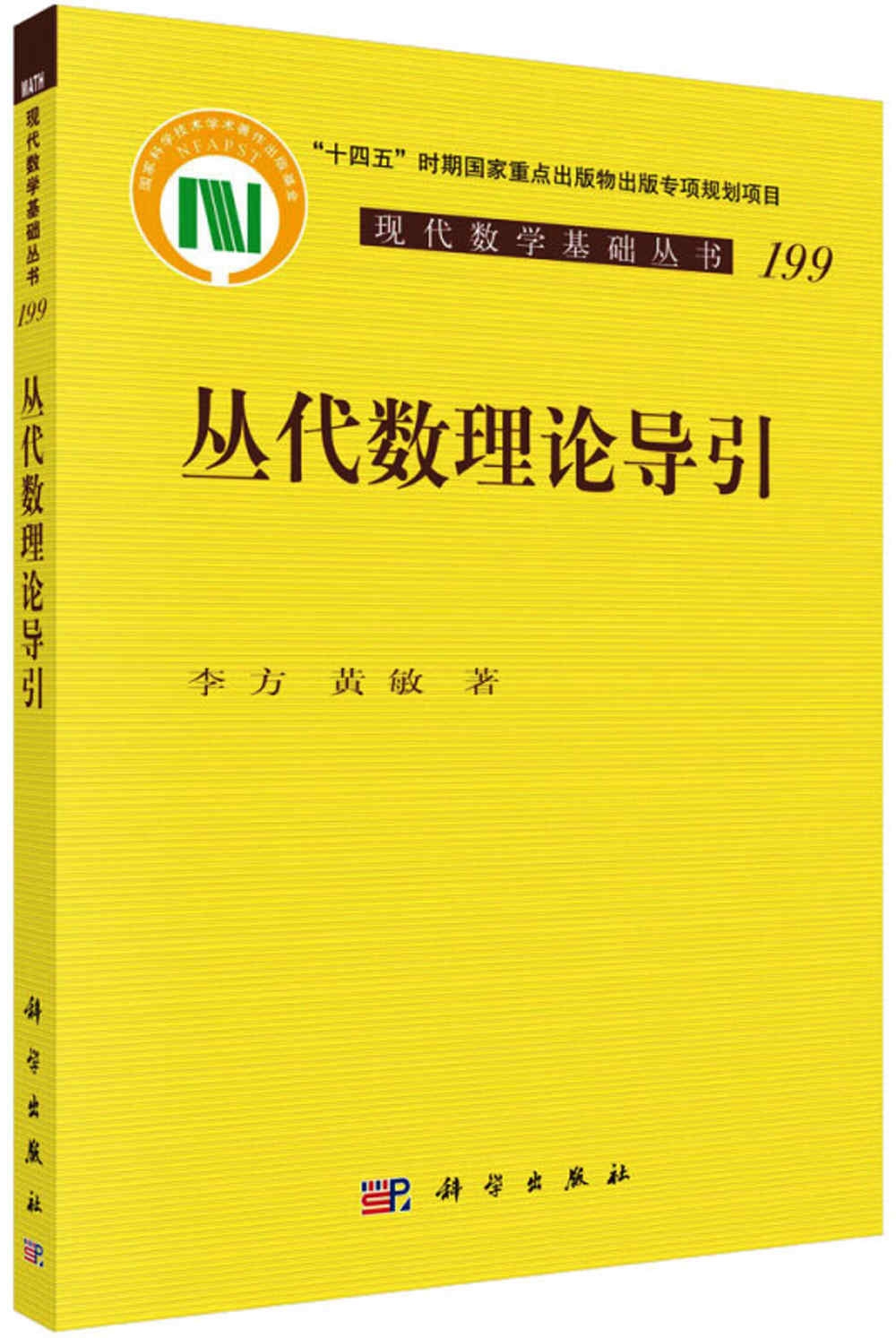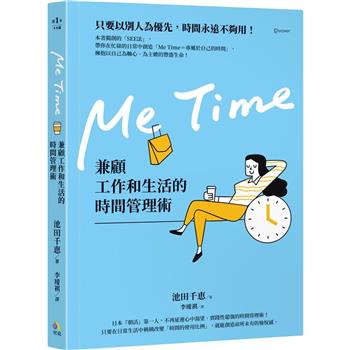| FindBook |
有 1 項符合
叢代數理論導引的圖書 |
| 圖書館借閱 |
| 國家圖書館 | 全國圖書書目資訊網 | 國立公共資訊圖書館 | 電子書服務平台 | MetaCat 跨館整合查詢 |
| 臺北市立圖書館 | 新北市立圖書館 | 基隆市公共圖書館 | 桃園市立圖書館 | 新竹縣公共圖書館 |
| 苗栗縣立圖書館 | 臺中市立圖書館 | 彰化縣公共圖書館 | 南投縣文化局 | 雲林縣公共圖書館 |
| 嘉義縣圖書館 | 臺南市立圖書館 | 高雄市立圖書館 | 屏東縣公共圖書館 | 宜蘭縣公共圖書館 |
| 花蓮縣文化局 | 臺東縣文化處 |
|
|
圖書介紹 - 資料來源:博客來 評分:
圖書名稱:叢代數理論導引
內容簡介
本書介紹叢代數研究的理論基礎和部分專題,其中,基礎部分,著重從代數方法和組合方法兩方面介紹叢代數的結構;專題部分,介紹叢代數理論與數學各個方面(包括拓撲、幾何、表示論、數論、矩陣論等)的聯繫。在一些專題的介紹裡,指出了目前理論的研究進展和面臨的問題。本書可作為高等學校數學類高年級本科生和研究生的教學參考書,也可供數學專業研究人員和其他相關專業有興趣者參考。
目錄
《現代數學基礎叢書》序
序言
前言
第1章 叢模式和叢代數 1
1.1 叢模式和叢代數的定義和例子 1
1.2 量子叢代數的定義和例子 10
1.3 Laurent現象 15
第2章 叢代數的換點陣圖 20
2.1 定義和例子 20
2.2 一些基本結論 23
第3章 叢代數的換位矩陣 26
3.1 符號斜對稱矩陣的完全性 26
3.2 換位矩陣變異的矩陣表達 31
第4章 叢代數的叢同態、子結構和商結構 35
4.1 叢同態和種子同態 35
4.2 叢子代數 41
4.3 叢商代數 43
4.3.1 由賦么化構造的叢商代數 43
4.3.2 由粘合方法刻畫的叢商代數 45
4.4 叢自同構的一個刻畫 48
第5章 叢代數的覆蓋理論和叢變數的正性問題 53
5.1 折疊和展開 53
5.2 無圈符號斜對稱矩陣的強幾乎有限箭圖 56
5.3 無圈符號斜對稱矩陣的展開定理 59
5.4 叢變數Laurent展開的正性問題 60
第6章 叢代數的各類組合參數及相互關係 66
6.1 叢變數的分母向量 66
6.2 c-向量與極大綠色序列 69
6.3 F-多項式和/-向量 73
6.4 向量和G-矩陣 76
6.5 C-矩陣與G-矩陣的關係及相關性質 82
6.6 F-多項式與叢變數、d-向量和化向量之間的關係 90
6.6.1 廣義度 90
6.6.2 關係與關係圖 91
第7章 來自曲面的叢代數 96
7.1 基本概念 96
7.1.1 曲面的三角剖分及翻轉 96
7.1.2 帶標記的三角剖分 99
7.2 來自曲面的叢代數的定義 102
7.3 蛇圖及其完美匹配 106
7.3.1 蛇圖的抽象定義 106
7.3.2 完美匹配及其扭轉 106
7.3.3 蛇圖Gto,r的構造 107
7.3.4 完美匹配集P(Gto,r)的格結構 108
7.4 展開公式 109
7.4.1 A與A(p)的一個叢代數同構 109
7.4.2 不帶標記的弧的情形 111
7.4.3 一端帶標記的弧的情形 114
7.4.4 兩端帶標記的弧的情形 116
7.4.5 注記 117
第8章 有限型和有限變異型叢代數 119
8.1 有限型叢代數 119
8.1.1 有限型叢代數的一個刻畫 119
8.1.2 秩≤2的有限型叢代數分類 120
8.1.3 定理8.1的證明 123
8.2 有限變異型叢代數 125
8.2.1 斜對稱情況 126
8.2.2 可斜對稱化情況 126
第9章 散射圖理論簡介 132
9.1 固定資料 132
9.2 牆 134
9.3 散射圖 135
9.4 胞腔和散射圖的拉回 139
9.5 散射圖的變異 140
9.6 折斷線與Theta函數 143
第10章 叢代數結構的一些基本性質 145
10.1 叢變數的分母向量正性 145
10.1.1 叢代數的足夠滻對性質 146
10.1.2 分母向量正性的證明 150
10.2 真Laurent單項式性質和叢單項式的線性無關性 153
10.3 叢代數的結構唯一性 155
10.3.1 相容性函數與叢的刻畫 155
10.3.2 結構唯一性定理 159
第11章 叢代數的基 162
11.1 一組“好”的基的標準 162
11.2 標準單項式和標準單項式基 163
11.3 膨脹基 166
11.4 三角基 168
11.4.1 Berenstein-Zelevinsky三角基 168
11.4.2 覃三角基 173
11.5 來自曲面的叢代數的基 174
11.5.1 圈鐲集 175
11.5.2 糾結關係與環鏈集 176
11.5.3 鏈帶集 177
11.5.4 叢代數的三個基 178
11.6 Theta函數、Theta基與膨脹基 179
11.6.1 Theta基 179
11.6.2 秩為2時的膨脹基和Theta基的關係 180
11.7 一個總結性圖表 183
第12章 量子重Bruhat胞腔上的量子叢代數結構 185
12.1 預備知識 185
12.1.1 廣義Cartan矩陣與Weyl群 185
12.1.2 重字元 186
12.2 量子包絡代數 187
12.3 李群的量子座標環 189
12.4 矩陣二元組及其相容性 191
12.5 量子重Bruhat胞腔 198
12.6 量子重Bruhat胞腔上的量子叢代數結構 203
第13章 叢範疇與叢代數的範疇化 207
13.1 叢範疇與叢傾斜物件及其變異 207
13.2 三類常用叢範疇 213
13.2.1 軌道範疇 214
13.2.2 廣義叢範疇 215
13.2.3 Probenius 2-Calabi-Yau範疇 217
13.3 叢代數的範疇化及其應用 219
13.3.1 叢特徵 219
13.3.2 向量的範疇化 221
13.3.3 叢的s-向量符號一致性的證明 223
13.3.4 多項式常數項為1的證明 227
第14章 模式與投射線構形 228
14.1 模式的定義及實例 228
14.2 投射線構形的f-模式 231
第15章 全正矩陣的叢代數刻畫 236
15.1 全正矩陣與初始子式 236
15.2 矩陣的雙線圖 237
15.3 主要定理的證明 245
第16章 與數論中若干問題的關係 246
16.1 Markov方程 246
16.2 Somos序列 249
16.3 Fermat數 252
參考文獻 254
索引 263
後記 269
《現代數學基礎叢書》已出版書目
Contents
(Fang Li, Min Huang)
Foreword
Preface
1 Cluster Pattern and Cluster Algebra 1
1.1 Cluster pattern and cluster algebra: Definition and examples 1
1.2 Quantum cluster algebra: Definition and examples 10
1.3 Laurent phenomenon 15
2 Exchange Graphs of Cluster Algebras 20
2.1 Definition and examples 20
2.2 Some basic conclusions 23
3 Exchange Matrices of Cluster Algebras 26
3.1 Totality of sign-skew-symmetric matrices 26
3.2 Matrix formula of mutations of exchange matrices 31
4 Cluster Homomorphisms, Substructure, Quotient Structure of Cluster Algebras 35
4.1 Cluster homomorphisms and seed homomorphisms 35
4.2 Cluster subalgebras 41
4.3 Cluster quotient algebras 43
4.3.1 Cluster quotient algebras constructed from specialization 43
4.3.2 Cluster quotient algebras characterizedvia gluing method 45
4.4 A characterization of cluster automorphisms 48
5 Unfolding Theory for Cluster Algebras and Positivity of Cluster Variables 53
5.1 Folding and unfolding 53
5.2 Strongly almost finite quivers from acyclic sign-skew-symmetric matrices 55
5.3 Unfolding theorem for acyclic sign-skew-symmetric matrices 59
5.4 Positivity for Laurent expansion of a cluster variable 60
6 Combinatorial Parameterization of Cluster Algebras and Their Relationships 66
6.1 Denominator vector of a cluster variable 66
6.2 c-vectors and maximal green sequences 69
6.3 F-polynomials and /-vectors 73
6.4 g-vectors and G-matrices 76
6.5 Relationship between C-matrices and G-matrices and some related properties 82
6.6 Relationship among F-polynomials,d-vectors,g-vectors and cluster variables 90
6.6.1 Generalized degree 90
6.6.2 Relationship and the relation diagram 91
7 Cluster Algebras From Surfaces 96
7.1 Basic concepts 96
7.1.1 Triangulations of surfaces and flips 96
7.1.2 Tagged triangulations 99
7.2 Definition of cluster algebras from surfaces 102
7.3 Snake graphs and their perfect matchings 106
7.3.1 Abstract definition of snake graphs 106
7.3.2 Perfect matchings and twists 106
7.3.3 Construction of snake graphs Gto,r 107
7.3.4 Lattice structure on the set of perfect matchings P(Gto,r) 108
7.4 Expansion formulas 109
7.4.1 A cluster isomorphism from A to 109
7.4.2 Tagged arcs with two ends tagged plain 111
7.4.3 Tagged arcs with one end tagged plain andone end tagged notched 114
7.4.4 Tagged arcs with two ends tagged notched 116
7.4.5 Remark 117
8 Cluster Algebras of Finite Type and Finite Mutation Type 119
8.1 Finitetype cluster algebras 119
8.1.1 A characterization of finite type cluster algebras 119
8.1.2 Classification of finite type cluster algebras of rank ≤2 120
8.1.3 Proof of Theorem 8.1 123
8.2 Finitemutation type cluster algebras 125
8.2.1 Skew-symmetric case 126
8.2.2 Skew-symmetrizable case 126
9 Synopsis of Scattering Diagrams 132
9.1 Fixed data 132
9.2 Walls 134
9.3 Scattering diagrams 135
9.4 Cells and pull-back of scattering diagrams 139
9.5 Mutation of scattering diagrams 140
9.6 Broken lines and Theta functions 143
10 Some Fundamental Properties of the Structure of Cluster Algebras 145
10.1 Positivity for denominator vectors of cluster variables 145
10.1.1 Enough g-pair properties of cluster algebras 146
10.1.2 Proof of the positivity for denominator vectors 150
10.2 Proper Laurent monomial property and linear independence of cluster monomials 153
10.3 Unistructurality of cluster algebras 155
10.3.1 Compatible functions and characterization of clusters 155
10.3.2 Unistructurality Theorem I59
11 Bases for Cluster Algebras 162
11.1 Some standards for “good” bases 162
11.2 Standard monomials and standard monomial basis 163
11.3 Greedy basis 166
11.4 Triangular basis 168
11.4.1 Berenstein-Zelevinsky,s triangular basis 168
11.4.2 Qin's triangular basis 173
11.5 Bases for cluster algebras from surfaces 174
11.5.1 Bangle set 175
11.5.2 Skein relation and bracelet set 176
11.5.3 Band set 177
11.5.4 Three bases for cluster algebras 178
11.6 Theta functions, Theta basis and greedy basis 179
11.6.1 Theta basis 179
11.6.2 Relationship between greedy basis and Theta basis for cluster algebras of rank 2 180
11.7 A summary table 183
12 Structure of Quantum Cluster Algebras on Quantum Double Bruhat Cells 185
12.1 Preliminaries 185
12.1.1 Generalized Cartan matrices and Weyl groups 185
12.1.2 Double words 186
12.2 Quantumenveloping algebras 187
12.3 Quantumcoordinate rings of Lie groups 189
12.4 Matrices pair and its compatibility 191
12.5 Quantumdouble Bruhat cells 198
12.6 Quantumcluster algebras on double Bruhat cells 203
13 Cluster Categories and Additive Categorification 207
13.1 Cluster categories, cluster tilting objects and their mutations 207
13.2 Three kinds of cluster categories 213
13.2.1 Orbit categories 214
13.2.2 Generalized cluster categories 215
13.2.3 Frobenius 2-Calabi-Yau categories 217
13.3 Categorifications of cluster algebras and their applications 219
13.3.1 Cluster characters 219
13.3.2 Categorification of g-vectors 221
13.3.3 Proof of sign-coherence of g-vectors of a cluster 223
13.3.4 Proof of that F-polynomials have constant terms 1 227
14 Y-pattern and Configurations of Projective Lines 228
14.1 Y -pattern: Definition and examples 228
14.2 Y -patterns from configurations of projective lines 231
15 Cluster Algebra Structure on Totally Positive Matrices 236
15.1 Totally positive matrices and initial minors 236
15.2 Double wiring diagrams for matrices 237
15.3 Proof of the main theorem 245
16 Connection with Some Problems in Number Theory 246
16.1 Markov equation 246
16.2 Somos sequences 249
16.3 Fermat numbers 252
References 254
Index 263
Postscript 269
序言
前言
第1章 叢模式和叢代數 1
1.1 叢模式和叢代數的定義和例子 1
1.2 量子叢代數的定義和例子 10
1.3 Laurent現象 15
第2章 叢代數的換點陣圖 20
2.1 定義和例子 20
2.2 一些基本結論 23
第3章 叢代數的換位矩陣 26
3.1 符號斜對稱矩陣的完全性 26
3.2 換位矩陣變異的矩陣表達 31
第4章 叢代數的叢同態、子結構和商結構 35
4.1 叢同態和種子同態 35
4.2 叢子代數 41
4.3 叢商代數 43
4.3.1 由賦么化構造的叢商代數 43
4.3.2 由粘合方法刻畫的叢商代數 45
4.4 叢自同構的一個刻畫 48
第5章 叢代數的覆蓋理論和叢變數的正性問題 53
5.1 折疊和展開 53
5.2 無圈符號斜對稱矩陣的強幾乎有限箭圖 56
5.3 無圈符號斜對稱矩陣的展開定理 59
5.4 叢變數Laurent展開的正性問題 60
第6章 叢代數的各類組合參數及相互關係 66
6.1 叢變數的分母向量 66
6.2 c-向量與極大綠色序列 69
6.3 F-多項式和/-向量 73
6.4 向量和G-矩陣 76
6.5 C-矩陣與G-矩陣的關係及相關性質 82
6.6 F-多項式與叢變數、d-向量和化向量之間的關係 90
6.6.1 廣義度 90
6.6.2 關係與關係圖 91
第7章 來自曲面的叢代數 96
7.1 基本概念 96
7.1.1 曲面的三角剖分及翻轉 96
7.1.2 帶標記的三角剖分 99
7.2 來自曲面的叢代數的定義 102
7.3 蛇圖及其完美匹配 106
7.3.1 蛇圖的抽象定義 106
7.3.2 完美匹配及其扭轉 106
7.3.3 蛇圖Gto,r的構造 107
7.3.4 完美匹配集P(Gto,r)的格結構 108
7.4 展開公式 109
7.4.1 A與A(p)的一個叢代數同構 109
7.4.2 不帶標記的弧的情形 111
7.4.3 一端帶標記的弧的情形 114
7.4.4 兩端帶標記的弧的情形 116
7.4.5 注記 117
第8章 有限型和有限變異型叢代數 119
8.1 有限型叢代數 119
8.1.1 有限型叢代數的一個刻畫 119
8.1.2 秩≤2的有限型叢代數分類 120
8.1.3 定理8.1的證明 123
8.2 有限變異型叢代數 125
8.2.1 斜對稱情況 126
8.2.2 可斜對稱化情況 126
第9章 散射圖理論簡介 132
9.1 固定資料 132
9.2 牆 134
9.3 散射圖 135
9.4 胞腔和散射圖的拉回 139
9.5 散射圖的變異 140
9.6 折斷線與Theta函數 143
第10章 叢代數結構的一些基本性質 145
10.1 叢變數的分母向量正性 145
10.1.1 叢代數的足夠滻對性質 146
10.1.2 分母向量正性的證明 150
10.2 真Laurent單項式性質和叢單項式的線性無關性 153
10.3 叢代數的結構唯一性 155
10.3.1 相容性函數與叢的刻畫 155
10.3.2 結構唯一性定理 159
第11章 叢代數的基 162
11.1 一組“好”的基的標準 162
11.2 標準單項式和標準單項式基 163
11.3 膨脹基 166
11.4 三角基 168
11.4.1 Berenstein-Zelevinsky三角基 168
11.4.2 覃三角基 173
11.5 來自曲面的叢代數的基 174
11.5.1 圈鐲集 175
11.5.2 糾結關係與環鏈集 176
11.5.3 鏈帶集 177
11.5.4 叢代數的三個基 178
11.6 Theta函數、Theta基與膨脹基 179
11.6.1 Theta基 179
11.6.2 秩為2時的膨脹基和Theta基的關係 180
11.7 一個總結性圖表 183
第12章 量子重Bruhat胞腔上的量子叢代數結構 185
12.1 預備知識 185
12.1.1 廣義Cartan矩陣與Weyl群 185
12.1.2 重字元 186
12.2 量子包絡代數 187
12.3 李群的量子座標環 189
12.4 矩陣二元組及其相容性 191
12.5 量子重Bruhat胞腔 198
12.6 量子重Bruhat胞腔上的量子叢代數結構 203
第13章 叢範疇與叢代數的範疇化 207
13.1 叢範疇與叢傾斜物件及其變異 207
13.2 三類常用叢範疇 213
13.2.1 軌道範疇 214
13.2.2 廣義叢範疇 215
13.2.3 Probenius 2-Calabi-Yau範疇 217
13.3 叢代數的範疇化及其應用 219
13.3.1 叢特徵 219
13.3.2 向量的範疇化 221
13.3.3 叢的s-向量符號一致性的證明 223
13.3.4 多項式常數項為1的證明 227
第14章 模式與投射線構形 228
14.1 模式的定義及實例 228
14.2 投射線構形的f-模式 231
第15章 全正矩陣的叢代數刻畫 236
15.1 全正矩陣與初始子式 236
15.2 矩陣的雙線圖 237
15.3 主要定理的證明 245
第16章 與數論中若干問題的關係 246
16.1 Markov方程 246
16.2 Somos序列 249
16.3 Fermat數 252
參考文獻 254
索引 263
後記 269
《現代數學基礎叢書》已出版書目
Contents
(Fang Li, Min Huang)
Foreword
Preface
1 Cluster Pattern and Cluster Algebra 1
1.1 Cluster pattern and cluster algebra: Definition and examples 1
1.2 Quantum cluster algebra: Definition and examples 10
1.3 Laurent phenomenon 15
2 Exchange Graphs of Cluster Algebras 20
2.1 Definition and examples 20
2.2 Some basic conclusions 23
3 Exchange Matrices of Cluster Algebras 26
3.1 Totality of sign-skew-symmetric matrices 26
3.2 Matrix formula of mutations of exchange matrices 31
4 Cluster Homomorphisms, Substructure, Quotient Structure of Cluster Algebras 35
4.1 Cluster homomorphisms and seed homomorphisms 35
4.2 Cluster subalgebras 41
4.3 Cluster quotient algebras 43
4.3.1 Cluster quotient algebras constructed from specialization 43
4.3.2 Cluster quotient algebras characterizedvia gluing method 45
4.4 A characterization of cluster automorphisms 48
5 Unfolding Theory for Cluster Algebras and Positivity of Cluster Variables 53
5.1 Folding and unfolding 53
5.2 Strongly almost finite quivers from acyclic sign-skew-symmetric matrices 55
5.3 Unfolding theorem for acyclic sign-skew-symmetric matrices 59
5.4 Positivity for Laurent expansion of a cluster variable 60
6 Combinatorial Parameterization of Cluster Algebras and Their Relationships 66
6.1 Denominator vector of a cluster variable 66
6.2 c-vectors and maximal green sequences 69
6.3 F-polynomials and /-vectors 73
6.4 g-vectors and G-matrices 76
6.5 Relationship between C-matrices and G-matrices and some related properties 82
6.6 Relationship among F-polynomials,d-vectors,g-vectors and cluster variables 90
6.6.1 Generalized degree 90
6.6.2 Relationship and the relation diagram 91
7 Cluster Algebras From Surfaces 96
7.1 Basic concepts 96
7.1.1 Triangulations of surfaces and flips 96
7.1.2 Tagged triangulations 99
7.2 Definition of cluster algebras from surfaces 102
7.3 Snake graphs and their perfect matchings 106
7.3.1 Abstract definition of snake graphs 106
7.3.2 Perfect matchings and twists 106
7.3.3 Construction of snake graphs Gto,r 107
7.3.4 Lattice structure on the set of perfect matchings P(Gto,r) 108
7.4 Expansion formulas 109
7.4.1 A cluster isomorphism from A to 109
7.4.2 Tagged arcs with two ends tagged plain 111
7.4.3 Tagged arcs with one end tagged plain andone end tagged notched 114
7.4.4 Tagged arcs with two ends tagged notched 116
7.4.5 Remark 117
8 Cluster Algebras of Finite Type and Finite Mutation Type 119
8.1 Finitetype cluster algebras 119
8.1.1 A characterization of finite type cluster algebras 119
8.1.2 Classification of finite type cluster algebras of rank ≤2 120
8.1.3 Proof of Theorem 8.1 123
8.2 Finitemutation type cluster algebras 125
8.2.1 Skew-symmetric case 126
8.2.2 Skew-symmetrizable case 126
9 Synopsis of Scattering Diagrams 132
9.1 Fixed data 132
9.2 Walls 134
9.3 Scattering diagrams 135
9.4 Cells and pull-back of scattering diagrams 139
9.5 Mutation of scattering diagrams 140
9.6 Broken lines and Theta functions 143
10 Some Fundamental Properties of the Structure of Cluster Algebras 145
10.1 Positivity for denominator vectors of cluster variables 145
10.1.1 Enough g-pair properties of cluster algebras 146
10.1.2 Proof of the positivity for denominator vectors 150
10.2 Proper Laurent monomial property and linear independence of cluster monomials 153
10.3 Unistructurality of cluster algebras 155
10.3.1 Compatible functions and characterization of clusters 155
10.3.2 Unistructurality Theorem I59
11 Bases for Cluster Algebras 162
11.1 Some standards for “good” bases 162
11.2 Standard monomials and standard monomial basis 163
11.3 Greedy basis 166
11.4 Triangular basis 168
11.4.1 Berenstein-Zelevinsky,s triangular basis 168
11.4.2 Qin's triangular basis 173
11.5 Bases for cluster algebras from surfaces 174
11.5.1 Bangle set 175
11.5.2 Skein relation and bracelet set 176
11.5.3 Band set 177
11.5.4 Three bases for cluster algebras 178
11.6 Theta functions, Theta basis and greedy basis 179
11.6.1 Theta basis 179
11.6.2 Relationship between greedy basis and Theta basis for cluster algebras of rank 2 180
11.7 A summary table 183
12 Structure of Quantum Cluster Algebras on Quantum Double Bruhat Cells 185
12.1 Preliminaries 185
12.1.1 Generalized Cartan matrices and Weyl groups 185
12.1.2 Double words 186
12.2 Quantumenveloping algebras 187
12.3 Quantumcoordinate rings of Lie groups 189
12.4 Matrices pair and its compatibility 191
12.5 Quantumdouble Bruhat cells 198
12.6 Quantumcluster algebras on double Bruhat cells 203
13 Cluster Categories and Additive Categorification 207
13.1 Cluster categories, cluster tilting objects and their mutations 207
13.2 Three kinds of cluster categories 213
13.2.1 Orbit categories 214
13.2.2 Generalized cluster categories 215
13.2.3 Frobenius 2-Calabi-Yau categories 217
13.3 Categorifications of cluster algebras and their applications 219
13.3.1 Cluster characters 219
13.3.2 Categorification of g-vectors 221
13.3.3 Proof of sign-coherence of g-vectors of a cluster 223
13.3.4 Proof of that F-polynomials have constant terms 1 227
14 Y-pattern and Configurations of Projective Lines 228
14.1 Y -pattern: Definition and examples 228
14.2 Y -patterns from configurations of projective lines 231
15 Cluster Algebra Structure on Totally Positive Matrices 236
15.1 Totally positive matrices and initial minors 236
15.2 Double wiring diagrams for matrices 237
15.3 Proof of the main theorem 245
16 Connection with Some Problems in Number Theory 246
16.1 Markov equation 246
16.2 Somos sequences 249
16.3 Fermat numbers 252
References 254
Index 263
Postscript 269
|











